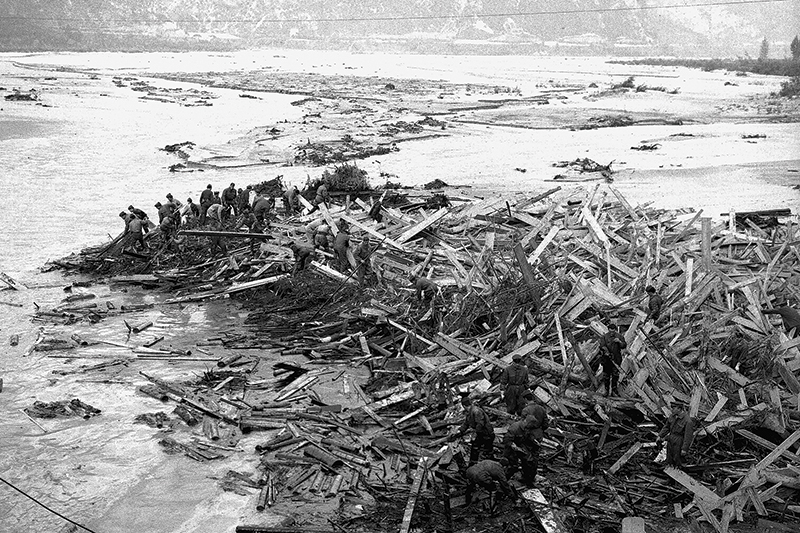The Vajont landslide

Vajont is the name of the river that flows through the valley of Erto and Casso in the province of Pordenone and then into the Piave River near Longarone and Castellavazzo in the province of Belluno.
The construction of a massive dam over 260 meters high on the border between Friuli-Venezia Giulia and Veneto significantly impacted the morphology of the valley of the Vajont river. The dam was built in 1959 and was considered the most significant engineering work for electricity production in Italy at that time. The dam's purpose was to form a lake that could collect water from all the artificial reservoirs in the Cadore region and then channel it to the Soverzene power plant. Unfortunately, the dam was constructed without considering the morphological characteristics of the slopes, which were entirely inadequate to contain a hydroelectric reservoir.
On the night of October 9, 1963, a massive landslide of 270 m³ broke off from the northern slope of Mount Toc and plunged into the hydroelectric reservoir. The impact with the water generated a wave of about 50 million m³ that first hit Erto and Casso, overflowed the large dam, and destroyed the built-up areas in the Veneto valley, including Longarone. The disaster resulted in the loss of 1,917 lives, and 400 people were never found.
Photo: The Vajont disaster of October 9, 1963 / The National Fire and Rescue Service